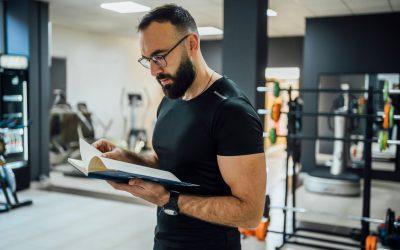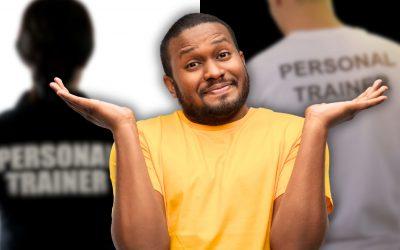Breadth of knowledge. Breadth of experience.
It requires you to draw from seemingly unrelated areas to solve the problems of your clients. Now sure, it’s important to have an area of specialisation, because this niche forms your ‘unique selling proposition‘, but if you’re ONLY a specialist, and lack breadth of knowledge, you severely limit the tools you have to be a problem solver.
There are three types of people.
‘Dash’ shaped people: –
‘I’ shaped people: I
‘T’ shaped people: T
‘Dash’ shaped people have a very low DEPTH of knowledge (they have no area of specialisation – no niche).
‘I’ shaped people are ultra specialists, they know a HUGE amount about one very narrow topic, but struggle when it comes to drawing on parallel or unrelated fields to solve problems.
‘T’ shaped people are a combination of the two. They have a niche, an area of deep knowledge, but they also possess a range of other tools needed to adapt and overcome to unknown situations. They can draw on knowledge and experience outside their speciality when needed.
You want to be a ‘T’ shaped person.
So let’s talk about how to build the ‘dash’ part of the ‘T’. The part that makes you a generalist. A ‘Jack-of-all-trades’. For the sake of our argument, we’re going to ignore the ‘I’ part of the ‘T’ – you build that through organised tertiary education, through apprenticeships, through thousands of hours of study and experience. Instead, let’s look for some low hanging fruit, some easy ways to build ‘width’.
What we propose is a method of ‘going deep’ on certain topics or fields of knowledge. Not to the point of multi-year study, but just for ten hours.
Why ten hours? Because of the law of diminishing returns.
In ten hours of deep, deliberate focus, you can learn the basics of almost any field or topic. The ‘Pareto Principle’ (which we’ve also talked about in relation to both nutrition and exercise) tells us that you can get 80% of the benefit from 20% of the effort. It tells us that a relatively small amount of work can deliver massive results.
So let’s apply this to the ten hours of deep learning we recommend on a topic. In ten hours you can learn (for argument’s sake) 80% of everything you need to know on a topic. Devote another ten hours to learning, maybe you now know 85% of everything (5% of learning as opposed to the 80% you got from the first ten hours). Got another ten hours, you now know may 87% of everything. Another ten? You’re up to 87.5%. And the more you learn, the more time you devote, the less extra material you can learn. In this rough example, ten hours has given you 80% knowledge. Where-as 40 hours has only nudged you up to 87%. How long would it take to learn EVERYTHING (100%)? There isn’t enough time in the Universe. You’ll never get there.
Maybe you’ve heard of the 10,000 hour rule? Where you need 10,000 hours of deliberate practice to achieve mastery. Mastery is the key word here. Because remember, we’re not chasing mastery, we’re chasing breadth. We’re learning enough, then moving on to the next field.
So where should we focus our attention for these ten hours?
It’s the information age, so you can look everywhere. Start with Wikipedia or a simple Google search. Common themes and terms will emerge. ‘Pull on the threads’ of these themes and terms and chase each one down the rabbit hole to see what it can teach you. When you feel you’re starting to get too far from your initial field of study, start again, this time pulling on a different thread.
You’ll find names of the ‘gurus’ in that field will pop up time and time again. Stalk these ‘gurus’. Follow them on social media. Visit their website. Subscribe to their YouTube channel. Look for podcast interviews with them (podcasts are a great way to get a distilled version of everything they know on a topic – perfect for our ‘first 80%’ purposes). Research their books, then (instead of reading the books, we don’t have time for that), look for book summaries. The app ‘Blinkist’ is the best way we’ve found of doing this. Watch their TED Talks, and when you’re there, search for other TED Talks on your topic of interest.
Do some short courses. Online course platforms like Udemy, Skillshare are great for this.
Search on Google Scholar for research on the topic. Just read the abstracts.
Keep pulling on threads to see where they take you.
Don’t worry too much about the reputability of the sources, you’re looking for an ‘average’ opinion. If you read/watch/listen to enough different sources you’ll find the ‘average’ of the information. Themes and concepts that are repeated. These repeated concepts are the 80% we’re chasing. You’ll find things repeated in different ways. This will give you breadth of perspective, and the varying angles will help you learn.
Need some ideas of where a ‘breadth-seeking’ Fitness Professional can focus their attention for these ten hour blocks? The options are endless; social media advertising, energy system threshold training, PNF techniques, nutrition for performance, how to be a better public speaker, movement screening, sports psychology… the list goes on.
Want to structure your learning? Do some research in to the Pomodoro technique – a productivity method whereby you work in 25 minute blocks of deep, undistracted, focussed work, followed by five minutes of ‘rest’. Gamify the process – draw 20 squares on a whiteboard, and every time you complete a 25 minute block of exploration into a topic, put a tick in one of the boxes. Tick every box and you know more about that field that 99% of people on Earth. Maybe this process takes a week. Maybe a month. Then start again, with a new topic and 20 new boxes.
The ability to become a specialist with generalistic tendencies is a superpower. You’ll be amazed at what it does to the value you can bring the world.




